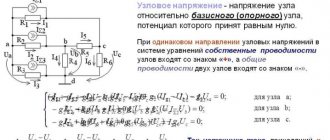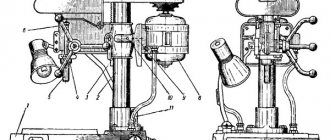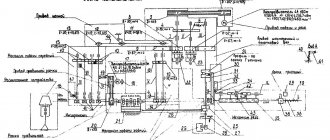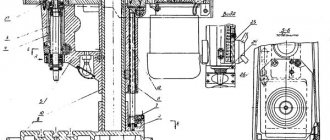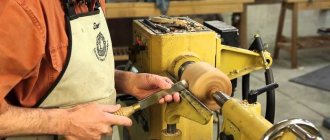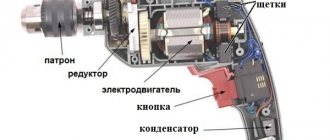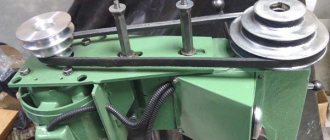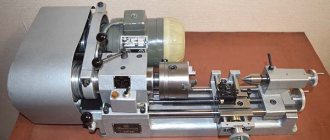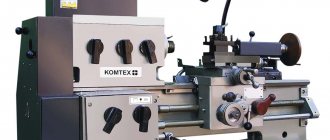Using this homemade device, you can significantly speed up the process of winding wire for making springs.
The design of the machine is quite simple, it consists of a base, two stands, a shaft for winding steel wire, to which the handle is attached, and a wire guide.
To make a winding machine, you will need the following materials:
- sheet metal 10 mm thick;
- profile pipe;
- square bar;
- strip of metal;
- round tube;
- steel round timber.
You might be interested in reading: how to make a universal file holder handle.
Winding machine operating method
Today, a winding machine is considered a very popular piece of equipment; with its use, single-layer and multilayer transformer-type coils are created. Due to this mechanism, it is possible to evenly distribute the wire onto the prepared drums. There are manual and automatic versions of the machines, both work on a similar basis:
- The main rotation can be transmitted from an installed electric drive or a mechanical handle. In the case of a crank, it is mounted on a shaft, which is also used to mount the drum.
- Wire laying is simplified by a special guide element. It is he who also ensures the uniform distribution of skeins.
- A special counter can determine the number of turns that are placed on the drum. When making homemade structures, a bicycle speedometer can be used as a counter.
Winding machine device
The use of a special mechanism allows for row and toroidal, cross-laying of wire. The electric version is characterized by high efficiency; rotation is transmitted from an electric motor through a belt drive and pulleys. The friction clutch makes operation smoother, which eliminates the possibility of breakage. Modern versions are equipped with digital equipment. Installed memory blocks can not only count the number of turns, but also remember this information.
Operating principle of the machine
It is not difficult to work on the designed machine. The technological process requires certain actions:
- The upper shaft is prepared for work: the pulley is removed, the required length of the coil frame is set, and the right and left disks are installed.
- A fastener is inserted into the hole in the upper shaft, centered and the frame is clamped with a special nut.
- The required pulley for the primary winding is mounted on the feed shaft.
- A stacker is installed opposite the reel frame.
- The belt is placed on the pulleys in a ring or figure eight, depending on the type of installation.
- The metal wire is inserted under the additional shaft, placed in the groove, and secured.
- The wire tension is adjusted using clamps located at the top of the stacker.
- The wire should be wound tightly around the base of the coil.
- The numerical value “1+1” is recorded on the calculator.
- Each revolution of the shaft adds a given count.
- If the turns need to be rewinded, press “–1” on the computing device.
- When the wire reaches the opposite part of the frame, use a collet clamp to change the position of the belt.
For different thicknesses of metal wire, the pulley is correlated with the winding pitch.
Related video: Do-it-yourself winding machine with stacker
Source
Winding machine mechanism
When considering a manual winding machine, you need to take into account that there are several different design options on sale: regular, toroidal and universal. All versions are characterized by certain features that must be taken into account.
Winding machine assembly diagram
The winding machine, which carries out row laying of wire, consists of the following elements:
- The design is based on a welded frame, which has seats and holes for fixing other main elements.
- Such a machine has a mechanism due to which long material is distributed evenly along the entire length of the drum. Distribution is carried out by a carriage with guide rollers, which is moved along the drum.
- Models of winding machines may differ from each other in size and functionality.
There are also standard mechanisms designed for laying wire. Among their features the following points can be noted:
- The main part of the structure is represented by a frame, which is made of metal and wood. It is located vertically.
- The supports serve to position two horizontal axes: one is used to install the plates, the second the coil.
- The mechanism also has replaceable gears, which are designed to transmit rotation.
- The axis is connected to the handle. A collet clamp is used to secure it.
- Screws and nuts are used as fasteners.
If you need to wind on toroidal cores, then a ring-type mechanism is used. It has the following features:
- The design resembles a shuttle that works on the principle of a sewing needle.
- This type of winding device has a bobbin. It is represented by a combination of two intersecting rings with a removable sector.
- In order for the spool to rotate, an electric motor is installed.
Taking into account the features of such mechanisms, you can create a homemade winding machine. It will not be significantly inferior to purchased ones, and it will be inexpensive.
Equipment and mechanisms for the production of wire and cable Cometo srl.
Rotating die holders with a soap dish (lubricant box) are used on drawing mills for uniform and stable application of lubricant to the wire rod/wire, reliable fixation and cooling of the dies.
The die holder body is a high-strength rigid structure on which a gearbox with an electric motor is installed. Depending on the drawing conditions and customer requirements, the soap dish can be long or short; the housing can be attached to an existing soap dish.
The fiber holders are presented in three versions with different dimensions. Each of them has 4 installation options on the mill, which provides the ability to adapt to most mills in production.
Die holders are available in high speed and low speed versions depending on the application. Additionally, soap dishes can be equipped with devices for mixing lubricant, eliminating the formation of a “channel” in the lubricant layer.
Product catalog (.PDF)
Cometo srl. offers the correct devices of several types. These are high-precision and reliable mechanisms that ensure high wire balance and stability. They can be equipped with digital position indicators for fast and precise roll positioning, significantly reducing setup time and reducing wire waste.
- Correct devices D
The simplest single-plane leveling devices with a screw adjustment system, requiring a minimum of space, mainly for the production of wire mesh. Rollers of type CA are used for wire 0.8 - 3.0 mm, and CAR - for wire 1.5 - 14.0 mm
- Correct ASF devices
Simple leveling devices, in two versions: ASF (with CA/CAR rollers) – for wire with a tensile strength of up to 600 N/mm2; and ASF-CAW (with CAW rollers) - with a tensile strength of up to 1,200 N/mm2. They can be single-plane (ASF-1) or two-plane (ASF-2).
- Correct AS-AD devices
Widely used range of straightening devices with a quick opening system: AS – single-plane, AD – double-plane. Manufactured in two versions: AS/AD (with CA/CAR rollers) – for wire with a tensile strength mainly up to 1,200 N/mm2; and AS/AD-CAW (with CAW rollers) - with a tensile strength of up to 2,200 N/mm2.
Product catalog (.PDF)
- Correct ASM-ADM devices
The ASM model is a single, and the ADM is a dual wire straightening device with sections arranged at 90°, with a rigid and reliable quick-closing system. The robust structure with close tolerances and two rows of adjustable rollers ensure perfect straightening quality of high-tensile wire in the production of springs and other special machines.
Product catalog (.PDF)
Cometo srl. produces bearings and rollers for wire straightening devices:
- standard bearings of the CA series, used when processing wire with a diameter of up to 3 mm;
- single-row guide rollers of the CAR series for processing wire with a diameter of 3 to 9 mm, which have a larger outer diameter compared to the CA series, which allows for a deeper spline groove;
- double-row guide rollers of the CAR2 series with high load-bearing capacity. The use of bearing lubrication during operation increases productivity and operability when processing hot wire or the presence of centrifugal forces;
- double-row guide rollers of the CAW series with a frame made of hardened alloy steel. The rollers have the same characteristics as CAR2 and can handle heavy loads thanks to the increased rigidity of the arbor (63 HRC), which allows for higher speed.
Product catalog (.PDF)
The guides are supplied with hardened and ground rollers.
- STR series pavers
Stackers with pneumatic reversing system for wire and cable winding devices, both old and new types. They have high reliability and provide excellent winding with infrequent and simple maintenance.
Product catalog (.PDF)
- Electronically controlled STR-E series
Used for high-quality winding devices for wire, cable, plastic profiles, both on new and old equipment. They are available in three standard sizes (STR-E 10-25-40), have laser detection capabilities for the walls of coils (bobbins), and are suitable for any type of winding.
Self-centering device with 4 hardened, ground rollers (optional with thick chrome plating) and a lever device for bringing the rollers together. Locking in the collapsed position is carried out using a traction screw. It has a high-strength rigid structure and is available in three versions with different dimensions.
Product catalog (.PDF)
Cometo MTF22 straightening machines are suitable for the production of rods of different lengths (standard - up to 3 meters) from wire with diameters from 0.8 to 10 mm from different materials. In addition to driven unwinding devices for different types of coils, the machines can be equipped with straightening systems - wire tasks, chamfering, marking of finished bars, and assembled into a line for the production of special electrodes (GTAW).
The receiving trays for bars are modular, each module is 1 meter long. They can be easily assembled and rebuilt to virtually any length required by the customer.
Thanks to the special straightening roller system, MTF22 machines are the best solution for straightening and cutting round and profile wires made of various materials such as steel, copper, aluminum alloys, without damaging the surface.
The MTF22 is mounted on a rugged, electro-welded frame designed to allow the machine to be assembled using varying lengths of straightening blocks, different cutting systems, and four different types of wire feed systems.
The bar length can be adjusted extremely simply: just enter the required length on the touch screen. The feed speed can range from 5% to 100% of the maximum permissible speed, which, based on 1000 mm bars, is up to 100 pcs./min.
An important advantage of MTF machines is a sharp reduction in noise compared to other machines.
Product catalog (.PDF)
Necessary materials and equipment for manufacturing
The main element of almost any structure can be called the frame. It is made by joining all the elements together by welding. The design features are as follows:
- A homemade winding machine should not withstand heavy loads. Therefore, holes are drilled in individual elements and then welded to the base.
- Bushings are mounted in the previously created holes, and bearings are placed in the lower ones.
- On the outside of the structure, the fastening elements are covered with covers.
- The upper shaft should have a diameter of 12 mm. It is designed to secure the reel.
- The middle one is designed to distribute the thread around the drum. Before using the mechanism, this element is polished.
- The lower shaft is intended for feeding long material. Its size can vary over a wide range.
Homemade winding machine
Winding machine manufacturing
The winding device can be made independently. It is recommended to use three-stage pulleys, which are machined from hardened steel.
Wire laying device
The process of distributing long material is carried out by three plates that are connected to each other. A 6 mm hole is drilled in the upper part of the structure being created. It is used to install the screw:
- Bushings with a diameter and length of 20 mm are mounted in the plates.
- The outer elements are connected by gluing the leather gutter. They are required to align and tension the reel.
- A steel rod with threads is attached to the top. It is designed to hold plates together.
- You can simplify the process by installing a folding bracket.
Wire laying device
A homemade winding machine is characterized by high efficiency. The winding device is quite simple to make even using simple materials and tools.
Manufacturing of turns counter
In some cases, you need to know the number of laid turns. For this, a special device is installed, which can also be made independently. Among the features we note the following points:
- An ordinary electric magnet is attached to the upper ball.
- An insulated wire is connected to one side.
- The lead-out contacts are connected to a special calculator.
- The coil with wire is placed separately.
Thread counter for winding machine
Turn counter circuit
Due to the similar arrangement of the main elements, the counter is compact and very effective in use. A winding machine with a homemade wind counting device gives a small error, which is worth taking into account.
Ordinary (linear) winding machines
By combining the parameters and conditions of winding, as well as the technical features of the product, it will be easy for an operator of any level to create a winding program, spending a minimum amount of time. The software will allow you to change (adjust) the winding program data in real time. Available: Internet, printing, etc.
— An electronic control unit based on SOEP-3/1 is a simplified option for controlling a winding machine. Allows you to store in memory one winding program with such parameters as layout pitch, start speed, home winding speed. The winding speed is set using the speed knob on the front panel of the control unit. The winding dimensions are set by mechanical limit switches. Winding is carried out according to the total number of specified turns. Technological stops are forced by the operator. Machines equipped with this unit are used for laboratory, educational, home purposes, as well as for primitive tasks.
We offer the most advanced technologies for winding and rewinding microwires, precision regular winding of welding wire on euro-cassettes, equipment for rewinding ropes, cables, large-section copper and aluminum tires, electric motors, armored and toroidal transformers, relays, chokes, ultra-precise sensors of gyroscope and non-destructive systems control, starter coils, edge busbars, toroidal and twisted magnetic cores, superconducting long materials, large-section steel and copper tape, winding of hoses, barbed wire, current transformers, linear current transformers, orthocyclic frame and frameless coils, loose windings and armatures of electric motors, insulating materials, flux-cored welding wire, flat and round heating elements made of nichrome tape and wire, thermistors with gold and platinum wire, spiral windings of shells with organosilicon materials.
Additional devices and accessories, such as an electronic microwire tensioner, friction mechanical tensioners, a device for winding armatures, winding devices of inertial and inertia-free type with coils, mandrels for loose windings of armatures and stators of electric motors, a programmable wire feeder and much more.
